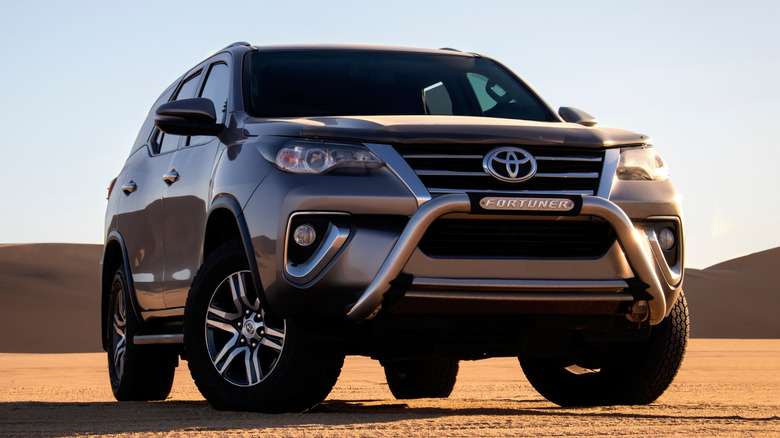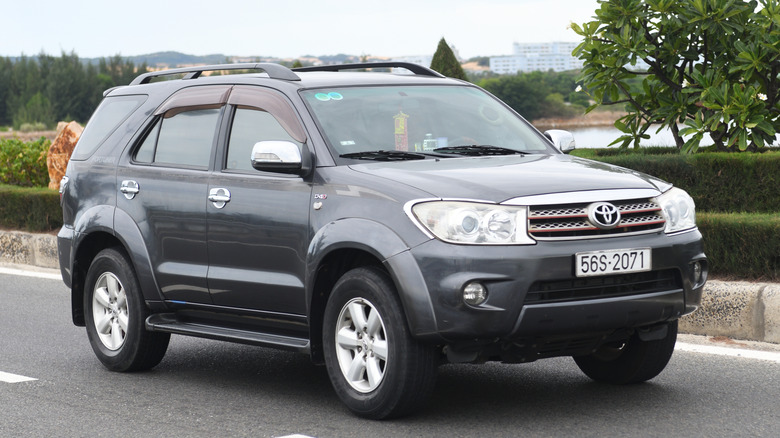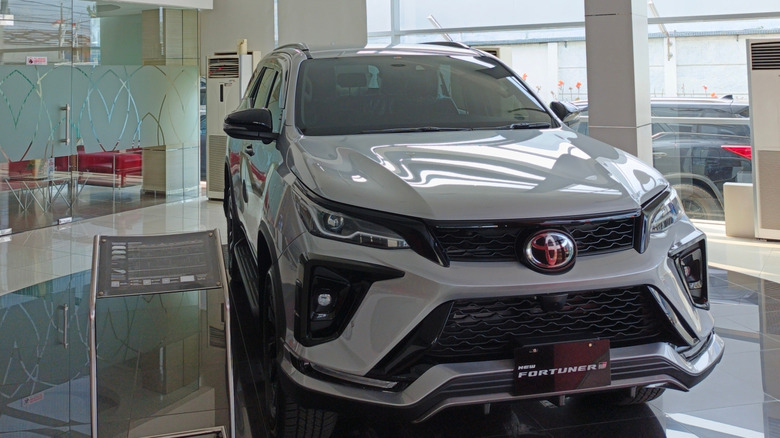What Is The Toyota Fortuner And Is It Available In The US?
SUV sales in the U.S. have been steadily increasing, according to a study done by Statista, for 2024, Toyota itself sold the highest number of SUVs with its RAV4 model. This is why it may be surprising that, despite the existing U.S. market demand, its strong sales, and a large following worldwide, the Fortuner has never been released in America.
The Fortuner is a mid-size SUV from Toyota that is sold in many countries. First launched in 2004, it is built on the Toyota Hilux platform and comes exclusively in a seven-seater station wagon body. For the most recent model, there are several engine options for the Fortuner, including gasoline and diesel, and a selection of 4-wheel or rear wheel drive transmission.
In the United States, Toyota sells several models from its SUV category, which includes a wide range of options from compact to full size and different powerplants from ICE engines to Hybrid. Available Toyota SUVs in America include the Corolla Cross, bZ4x, Rav4, Highlander, 4Runner, Grand Highlander, Sequoia, and Land Cruiser. Despite this wide selection, the Toyota Fortuner is not included because it is not available in the U.S.. There are, however, several key reasons why this is the case.
The Toyota Fortuner is not sold in the U.S.
At only 21 years old, Toyota Fortuner is quite young when compared to its other Toyota SUV stablemates like the Land Cruiser, and despite being in the market for over two decades, it is only in its second generation. Classified as a mid-size SUV, and first released in 2004, the Fortuner is one of the vehicles built under the IMV project of Toyota that saw four new models with shared platforms launched for the global market.
The Toyota IMV project, which stands for Innovative International Multi-purpose Vehicle, was a project started in 2004 by Toyota that distributed the parts manufacturing and vehicle assembly of its IMV models to various countries. This included engines that were produced in Thailand, and Indonesia as well as transmissions made in the Philippines and India. These were then shipped abroad as the vehicle assembly was then done in other countries, such as Thailand, Indonesia, South Africa, and Argentina.
The IMV origin of the Fortuner is one of the key reasons why it is not available in the United States, because of how and where it is built. From the start, its markets have been within the same geographical areas, such as Asia, Australia, South America, and North Africa, because it is where its manufacturing and supply chain facilities are also located. Another important consideration is safety and emissions standards. In the U.S. and other parts of the world, like Europe, the stricter emissions standards preclude the Fortuner because of its lower exhaust emissions rating from being offered, with the exception of Russia, where the Fortuner is available.
Better alternatives are available
As seen from their widespread presence on unpaved dirt roads, city streets, and suburban communities, SUVs have become a popular vehicle category in the United States. Because of its size, SUVs can carry more passengers and load larger, heavier cargo than a car. Additionally, due to its greater ride height and more powerful engine, it is capable of handling diverse road conditions and surfaces. Among car manufacturers, Toyota has some of the most diverse line-ups of SUVs available, but some models, including the Fortuner, are not sold in America.
For the U.S. market, the Fortuner, with its mid-size SUV classification, makes it comparable to the Toyota 4Runner, given its similar attributes and features to a Toyota SUV. This similarity ends when looking closely at the finer details because the 4Runner is bigger, wider, and more powerful. Specifications of the 2024 4Runner indicate that it has higher torque and a more advanced suspension system that will go further offroad than a contemporary Fortuner can.
While it may seem like a missed opportunity by Toyota because it does not offer the Fortuner in the U.S., their existing domestic models more than fill any gap that the Fortuner may fill. Available Toyota SUVs in the United States are actually ahead of any comparable generation Fortuner in terms of technology and features and are built with strict U.S. specifications as standard. The Fortuner is a good fit for the markets it was built for, but for Europe and rigorous Federal regulations in America, the Fortuner will need more development before it can be sold here.


